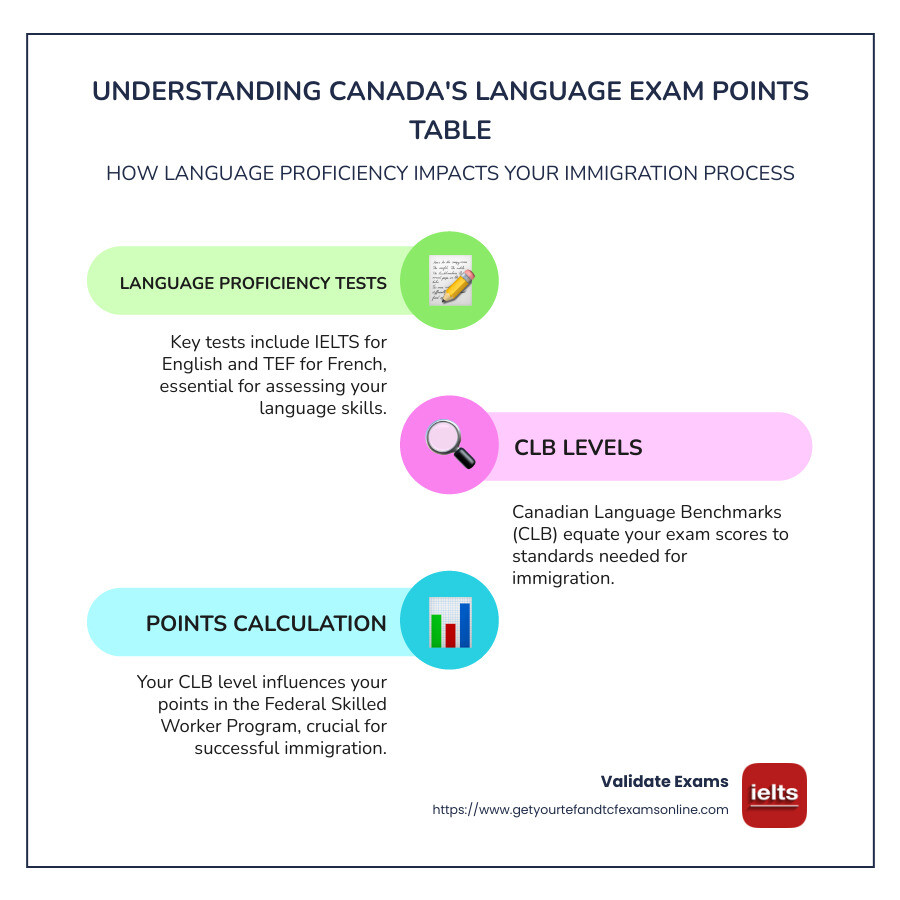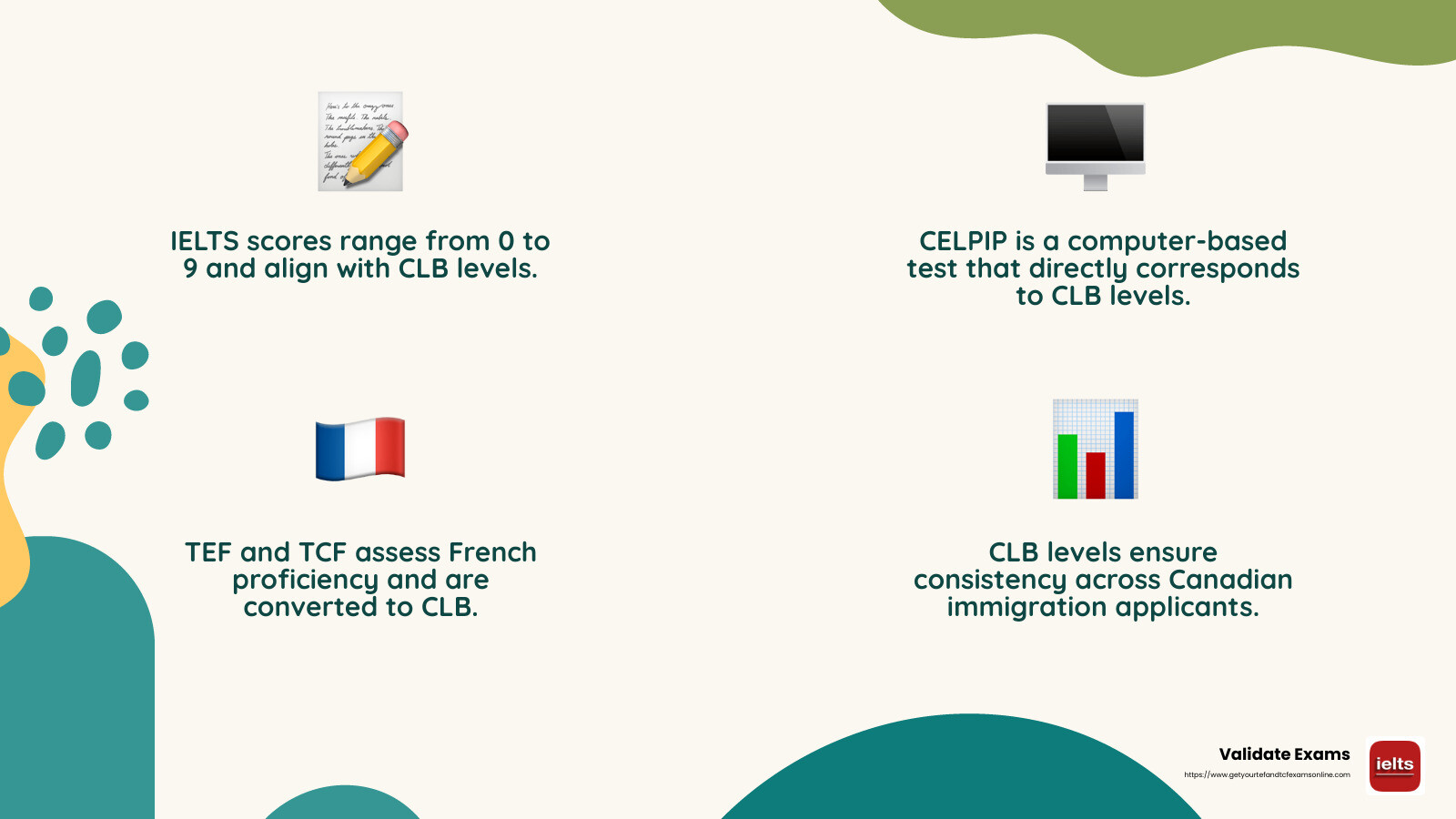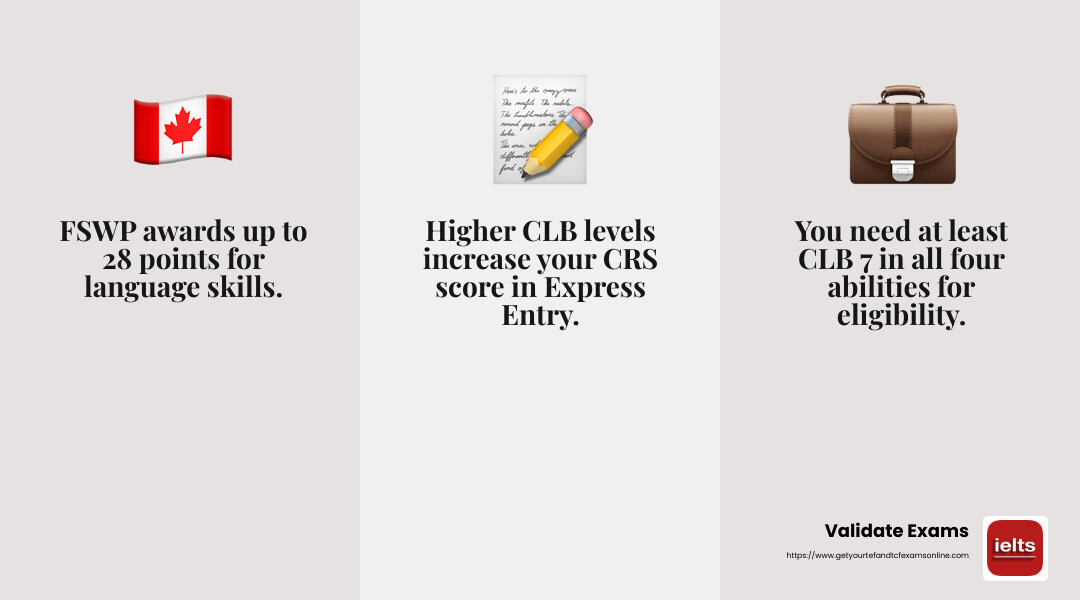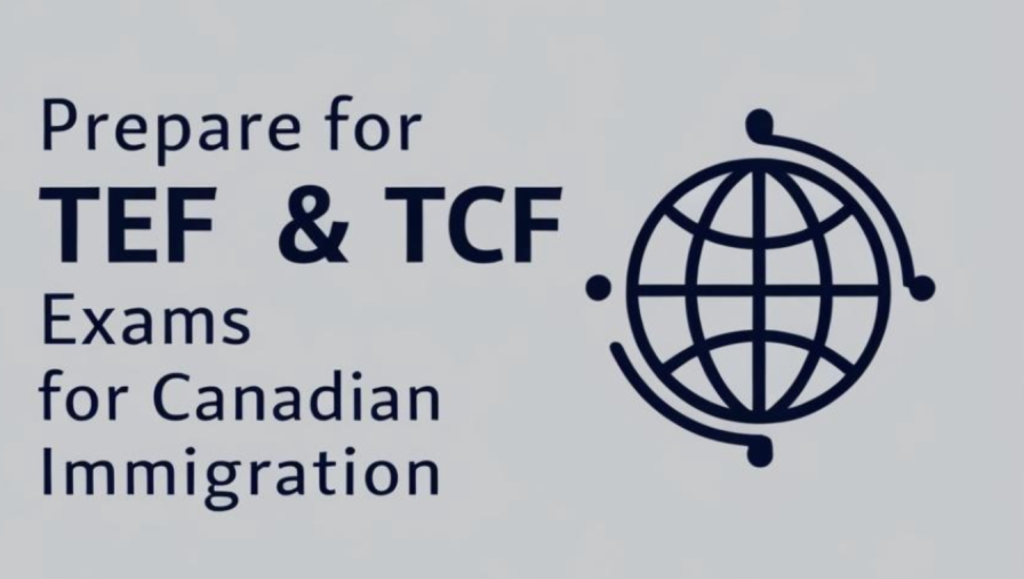Points Table Language Exam Canada: Top 5 Proven Tips
Points table language exam canada is a vital component for those aiming for Canadian immigration or academic pursuits. Language proficiency, particularly in English or French, is a key factor in immigration applications, influencing eligibility and competitiveness in systems like Express Entry. Achieving the right Canadian Language Benchmark (CLB) levels can significantly impact your total points, employment prospects, and integration into Canadian society. Understanding these tables is crucial for successfully navigating your path.
Reflecting standards such as the CLB, proficiency tests like IELTS and CELPIP for English or TEF and TCF for French determine your eligibility in immigration programs, especially the Federal Skilled Worker Program. In the following sections, we’ll delve into the specifics of these testing systems and explain how you can leverage your scores to achieve your Canadian aspirations.
I’m Baddo Magical, your guide through Canadian language exam scoring. With my expertise in IELTS, TEF, and more, I’ll help explain the points table language exam canada and guide you towards acing your journey.

Relevant articles related to points table language exam canada:
Understanding Canada’s Language Exam Scoring System
Navigating Canada’s language exam scoring system can seem daunting at first, but it’s essential for anyone looking to immigrate or study in the country. The Canadian Language Benchmark (CLB) is the standard used to assess your language proficiency in English or French. Let’s break down how various language tests align with the CLB levels and how they impact your immigration prospects.
Language Tests and CLB Equivalency
Canada recognizes several standardized tests to measure language proficiency. The most common ones include:
- IELTS (International English Language Testing System): Primarily used for English, the IELTS is divided into two versions: Academic and General Training. For immigration, the General Training version is required. The scores from this test are converted into CLB levels to ensure consistency across applicants.
- CELPIP (Canadian English Language Proficiency Index Program): This test is specifically custom to Canadian English and is fully computer-based. It’s a popular choice for those comfortable with Canadian English and technology. CELPIP scores are directly aligned with CLB levels.
- TEF (Test d’Évaluation de Français) and TCF (Test de Connaissance du Français): These are used to assess French proficiency. Like their English counterparts, TEF and TCF scores are converted into CLB levels, which are referred to as Niveaux de compétence linguistique canadiens (NCLC) for French.
IELTS, CELPIP, TEF, and TCF: How Do They Compare?
Each of these tests evaluates four key language skills: speaking, listening, reading, and writing. Here’s how they translate into CLB levels:
- IELTS: Scores range from 0 to 9 in each skill. For example, a score of 6.0 in all four skills aligns with CLB 7, which is often the minimum requirement for many immigration programs.
- CELPIP: Uses a scoring system from 1 to 12, which directly corresponds to CLB levels. For instance, a score of 7 in CELPIP equates to CLB 7.
- TEF and TCF: These tests have a different scoring range, but they are also converted into CLB levels. For example, a TEF listening score between 249-279 points corresponds to CLB 7.

Why CLB Levels Matter
Achieving the right CLB level is crucial. For instance, the Federal Skilled Worker Program requires a minimum of CLB 7 in all abilities. This threshold ensures that immigrants have a strong foundation in either English or French, which is vital for integration and success in Canada.
Higher CLB levels can also boost your points in the Express Entry system, making you a more competitive candidate for immigration. This is why understanding and achieving the necessary CLB levels is a vital step in your Canadian immigration journey.
In the next section, we’ll explore how to convert your test scores into CLB levels and use them effectively in your immigration application.
Points Table Language Exam Canada
When it comes to Canadian immigration, especially through the Federal Skilled Worker Program (FSWP), understanding the points table language exam Canada is crucial. Language proficiency is one of the six selection factors in this program, and it can significantly influence your eligibility and ranking in the immigration process.
Language Skills Factor
The FSWP awards up to 28 points for language skills. This factor is divided into two parts: the first official language and the second official language.
- First Official Language: You can earn up to 24 points. Points are given based on your proficiency in speaking, listening, reading, and writing. The scoring is aligned with Canadian Language Benchmarks (CLB) levels.
- Second Official Language: An additional 4 points can be obtained if you demonstrate proficiency in the second official language, provided you meet the minimum CLB 5 level.
CLB 7 Threshold
To be eligible for the FSWP, you must meet at least CLB 7 in all four language abilities for your first official language. This is considered “adequate intermediate proficiency.”
- IELTS Example: For IELTS, a score of 6.0 in each skill (listening, reading, writing, speaking) corresponds to CLB 7.
- CELPIP Example: A score of 7 in each skill aligns directly with CLB 7.
Why is CLB 7 important? Meeting this threshold ensures that you have the necessary language skills to live and work in Canada effectively. It also opens up more opportunities within the immigration system, such as higher rankings in the Express Entry pool.
Express Entry and Language Points
In the Express Entry system, language proficiency not only helps you qualify for the FSWP but also boosts your Comprehensive Ranking System (CRS) score. The higher your CLB level, the more points you earn, increasing your chances of receiving an invitation to apply for permanent residence.

In the following section, we’ll dig into the Language Test Equivalency Charts, helping you convert your test scores into CLB levels for a smoother immigration application process.
Language Test Equivalency Charts
Navigating Canadian immigration can be complex, especially when it comes to understanding how your language test scores convert into Canadian Language Benchmarks (CLB). This section will help you decode the equivalency charts for the major language tests: IELTS, CELPIP, TEF, and TCF.
IELTS to CLB
The IELTS (International English Language Testing System) is one of the most popular tests for proving English proficiency. Here’s how your IELTS scores translate to CLB levels:
- Listening: A score of 8.0 equals CLB 9, while 6.0 aligns with CLB 7.
- Reading: A 7.0 score corresponds to CLB 9, and 6.0 to CLB 7.
- Writing & Speaking: Both skills require a 7.0 for CLB 9 and 6.0 for CLB 7.
For instance, if you scored 6.0 in all four skills, you’re at CLB 7, meeting the threshold for the Federal Skilled Worker Program.
CELPIP to CLB
The CELPIP (Canadian English Language Proficiency Index Program) is a computer-based test focusing on Canadian English. Here’s the breakdown:
- All Skills (Listening, Reading, Writing, Speaking): A CELPIP score of 9 translates to CLB 9, and a score of 7 matches CLB 7.
This direct correlation makes it easier for test-takers to understand their CLB level.
TEF to CLB
The TEF (Test d’évaluation de français) is used to assess French proficiency. Here’s how it converts:
- Listening: A score between 298-315 equals CLB 9.
- Reading: Scores from 248-262 match CLB 9.
- Writing & Speaking: Scores of 248-262 and 298-315, respectively, correspond to CLB 9.
If you’re aiming for CLB 7, you’ll need scores like 217-248 in listening and 181-206 in writing.
TCF to CLB
The TCF (Test de Connaissance du Français) is another option for French language testing. Here’s how it stacks up:
- Listening & Reading: A score of 450-499 aligns with CLB 7.
- Writing & Speaking: Scores of 450-499 also match CLB 7.
Understanding these equivalency charts is vital for planning your immigration journey. They ensure that you can accurately convert your language test scores into CLB levels, helping you assess your eligibility and improve your chances in the immigration process.
In the next section, we’ll explore how to use your language test results effectively in your immigration applications.
How to Use Your Language Test Results
Once you have your language test results, it’s time to put them to good use. For those navigating the Canadian immigration process, understanding how to use these results is crucial.
Immigration Applications
Your language test results play a significant role in your immigration applications. They help determine your eligibility and can significantly impact your Comprehensive Ranking System (CRS) score if you’re applying through Express Entry. Make sure to input your scores accurately in your Express Entry profile. This includes the test result form or certificate number and test PIN, if required.
Key Points to Remember:
- Accuracy is crucial. Double-check your scores and ensure they match what’s on your official test report.
- Enter your results promptly to avoid delays in your application process.
Test Validity
Language test results are only valid for two years. This means they must be less than two years old when you complete your Express Entry profile and submit your application for permanent residence. If your results expire before you can apply, you have a few options:
- Retake the test to get updated scores.
- Apply before your results expire if possible.
- Decline an invitation and wait until you have valid results to re-enter the pool.
Applying with expired results will lead to a refusal, so keep track of your test dates and plan accordingly.
Score Conversion
Understanding how to convert your test scores into Canadian Language Benchmarks (CLB) levels is essential. The CLB is a standard used to evaluate your language ability in the context of Canadian immigration.
For example, if you took the IELTS and scored 6.0 in listening, reading, writing, and speaking, you have a CLB level of 7. This meets the minimum requirement for the Federal Skilled Worker Program.
Similarly, a CELPIP score of 7 in all skills also translates to CLB 7. Knowing these conversions helps you understand where you stand in meeting immigration criteria.
By effectively using your language test results, you can improve your immigration application, ensuring all requirements are met and increasing your chances of success.
In the following section, we’ll address some frequently asked questions about language exam scoring, including minimum CLB levels and score conversions.
Frequently Asked Questions about Language Exam Scoring
Navigating the language exam scoring system for Canadian immigration can be confusing. Here are some common questions and answers to help you understand the process better.
What is the minimum CLB level required for Canadian immigration?
For those applying through the Federal Skilled Worker Program, the minimum Canadian Language Benchmark (CLB) level required is CLB 7. This applies to all four language abilities: listening, reading, writing, and speaking. Achieving CLB 7 demonstrates a sufficient level of proficiency in English or French, which is crucial for meeting eligibility requirements.
How do I convert my IELTS score to a CLB level?
Converting your IELTS scores to CLB levels is straightforward with the help of a score chart. Here’s a quick reference:
- Listening: An IELTS score of 6.0 equals CLB 7.
- Reading: An IELTS score of 6.0 equals CLB 7.
- Writing: An IELTS score of 6.0 equals CLB 7.
- Speaking: An IELTS score of 6.0 equals CLB 7.
Using the score chart provided by the immigration authorities, you can easily determine your CLB level for each language ability. This conversion is essential for assessing your eligibility for various immigration programs.
Can I use expired language test results for immigration?
No, you cannot use expired language test results for your immigration application. Your test results must be less than two years old when you complete your Express Entry profile and submit your application for permanent residence. If your results expire before you can apply, consider these options:
- Retake the test to obtain updated scores.
- Apply before your results expire if possible.
- Decline an invitation and wait until you have valid results to re-enter the pool.
Submitting an application with expired results will lead to a refusal. Keeping track of your test validity is crucial to avoid any setbacks in your immigration journey.
In the next section, we’ll dig deeper into the language test equivalency charts to help you understand how different tests translate to CLB levels.
Conclusion
Navigating the complexities of Canada’s language exam scoring can be daunting. That’s where we come in. At Validate Exams, we offer a stress-free certification process that ensures you get the guaranteed scores you need without the hassle of traditional exams.
Our unique approach allows you to bypass the stress, preparation, and uncertainty that typically accompany language proficiency tests. Whether you need a certificate for IELTS, TOEFL, TEF, TCF, or any other recognized exam, we’ve got you covered. Our service is designed to be fast, reliable, and efficient, providing you with genuine and verifiable certificates.
By choosing Validate Exams, you are opting for a solution that saves time and effort. You can confidently apply for jobs, universities, or visas knowing that your language proficiency certificate is authentic and recognized.
Explore our services and take the next step toward achieving your goals with ease and confidence. Your success is our priority, and we’re here to support you every step of the way.

